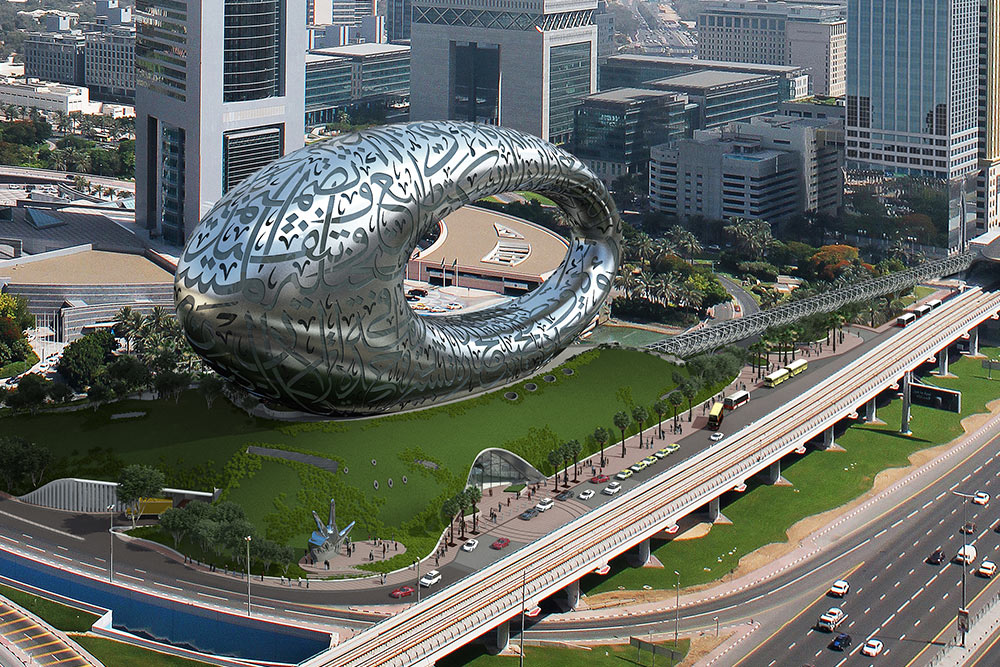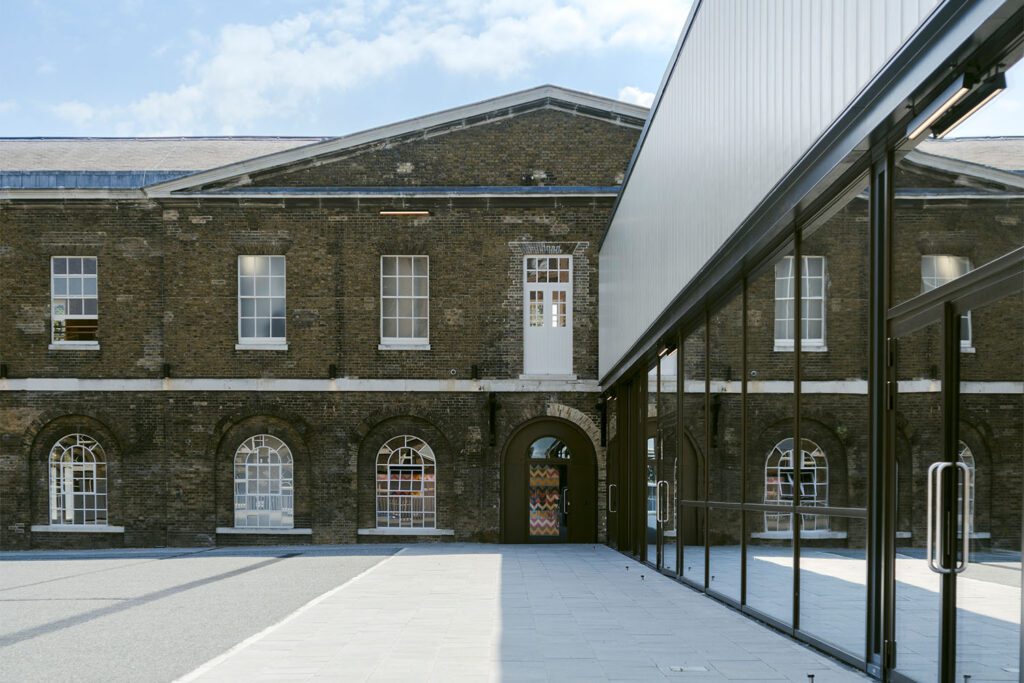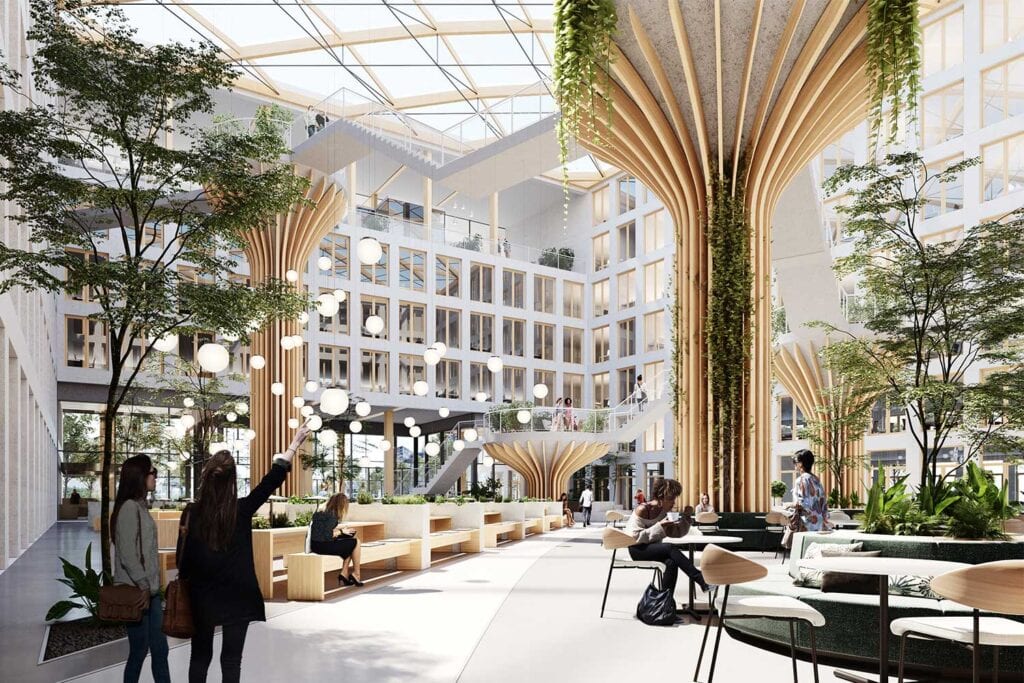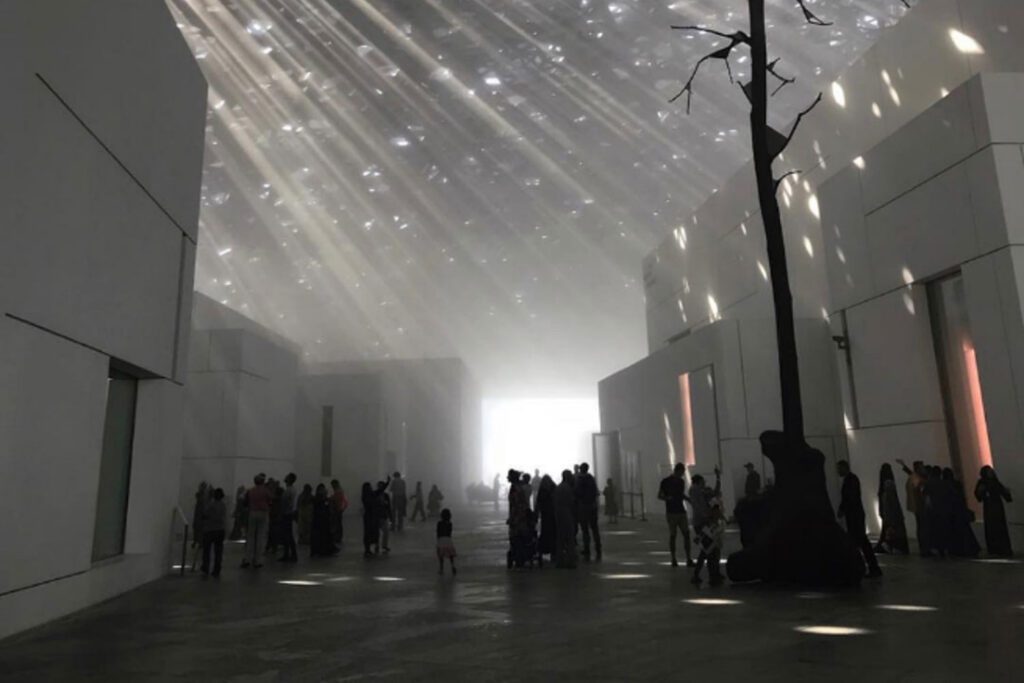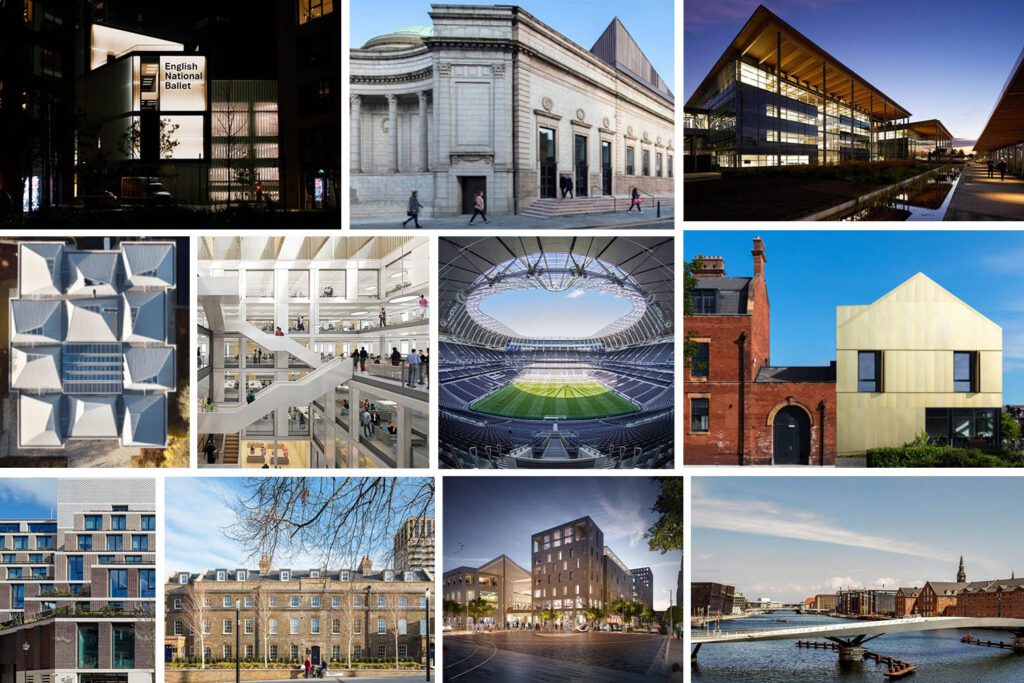Five cultural projects to look out for in 2022
This year, museums around the world are getting ready to welcome back visitors after a temporary hiatus. We take a look at five projects from Buro Happold’s cultural sector that are worth visiting in 2022.
Our engineers, consultants and advisors are continuing to deliver innovative and transformative solutions for clients around the world. From computational design and augmented reality in Hong Kong to structural engineering ingenuity in Lisbon, discover our latest cultural projects…
1. Museum of the Future – Dubai, United Arab Emirates
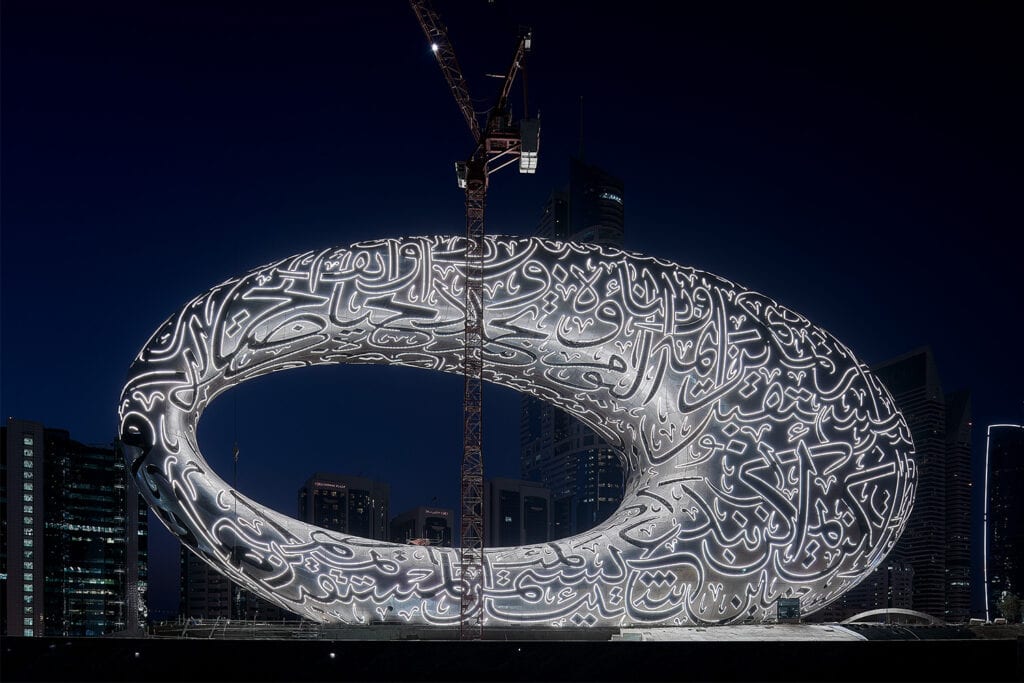
The Museum of the Future is a global cultural destination that symbolises both future progress and the regional design influence of Dubai.
Working with architects Killa Design, our multidisciplinary team solved the project’s unique and complex design challenges by optimising computational tools. Our specialist engineers developed bespoke, in-house BIM software to model and analyse numerous options for the structure to achieve the museum’s iconic torus shape.
Every element of the museum was designed in a collaborative BIM environment. Our specialist engineering are providing a diverse range of disciplines on this project, from facade, structural and building services engineering to sustainability consulting, infrastructure and lighting design.
Moreover, this striking building is highly sustainable, working towards LEED Platinum certification. For example, our team created a 3D energy model in which all 12 disciplines could interact in real time, allowing them to agree on over 50 sustainable design decisions that resulted in a range of tangible benefits. These include a 45% reduction in water use and total energy savings of 25%.
The Museum of the Future is a testament to the innovative minds, creative thinkers and problem solvers who have worked together to design and construct this project. Is it due to open on 22 February 2022.
2. Woolwich Works – London, UK

Woolwich Works is an exemplar of sustainable building restoration and a landmark new performance space in South East London. The project is part of a wider urban regeneration scheme in London. Buro Happold worked closely with architects Bennetts Associates on the transformation of five listed buildings from the historic Woolwich Arsenal into a vibrant new cultural quarter.
The project involved repurposing the Grade II-listed historic military buildings, transforming them into an arts destination, including exhibition, rehearsal and performance spaces. The client’s goal was to achieve a sympathetic redevelopment of the heritage buildings in order to increase the sustainability and accessibility of local cultural organisations. We initially conducted a feasibility study to outline a shell and core scope of works for this new cultural district.
Following the completion of the feasibility study, our multidisciplinary team delivered engineering consultancy across a range of specialisms for the refurbishment of these iconic listed buildings. These included building services, structural, civil and ground engineering, as well as inclusive design and sustainability consulting.
Woolwich is establishing itself as a cultural and creative hub, and Woolwich Works is one of the key lynchpins for this cultural reinvigoration. This new cultural quarter, as well as the expansion of the residential area and the arrival of the Elizabeth Line Crossrail station, will bring a new and diverse community to this London borough. Officially opening at the end of 2021, you can visit London’s new landmark creative district, which is hosting a plethora of art exhibitions, concerts and events throughout 2022.
3. Denver Art Museum – Colorado, USA

The Denver Art Museum (DAM) in Colorado recently underwent an extensive renovation of the existing 210,000ft2 North Building, which was originally constructed in 1971. The $175 million renovation to the museum campus has created a modern community-driven space that both welcomes and engages visitors.
Designed by Italian architect Gio Ponti and James Sudler Associates, the building’s facade has two glass tile-covered towers that have become iconic to the museum’s identity. The building’s form was designed with a series of reveals that emanate light.
As part of the renovation, Buro Happold will be upgrading the lighting design throughout the North Building. We are working with Machado Silvetti and Fentress Architects to deliver this cultural project.
The renovations will compliment the existing facade with the addition of a new three-story, circular glass entryway and welcome centre. Our lighting design services will maintain the original architectural intent, but improve the technology and reduce the required maintenance.
The North Building is home to a large majority of the DAM’s art collection. It is also the epicentre of the museum’s renowned education programme, which includes several classrooms, studios, learning and event spaces. The newly renovated museum has been open to the public since late 2021. It is an exemplar of what museum’s should look like in the twenty-first century, with inclusive and diverse storytelling at the heart of its collections.
4. Canopy Gulbenkian Garden – Lisbon, Portugal

The Fundação Calouste Gulbenkian is one of the most significant cultural and philanthropic institutions in Lisbon, Portugal. It is been committed to supporting scientific and cultural projects of the highest merit, aiming to improve quality of life through art, charity, science and education. The premises encompass a museum of modern and contemporary art, a library and a scientific research centre, which together form a beautiful modernist symbiosis with the surrounding park.
Working with architects Kengo Kuma & Associates, Buro Happold provided structural engineering services on the project, which expanded and refurbished the museum premises. The architects’ proposal introduced a canopy inspired by the Japanese wood or bamboo terraces known as “Engawa”. The design creates a new transition space between the Centre of Modern Art (CAM) and the park beyond.
Our structural engineering translated the architects’ vision by devising a complex yet buildable engineering design for the roof, which appears to float on a series of columns. To achieve the impression of a floating roof, we used slender steel-blade columns, paired to form a V-shape. Minimal structural requirements were key to the roof’s success.
Our engineering solutions push the boundaries of the current design and works with materials that that enhance and complement the surrounding landscape. The museum’s refurbishment and extension is expected to be completed in 2023.
The CAM is open to the public, hosting a wide range of artistic and scientific exhibitions, all the way from Ancient Egypt to the present day.
5. Resonance-in-Sight – Hong Kong, China

Hong Kong Museum of Art’s “Resonance-In-Sight” installation is a pair of curved steel structures, brought together by Augmented Reality animated images.
This new reality has been carefully designed and curated to echo the museum’s core collection. Visitors will be able to experience the artworks by lifting their smartphone and viewing it in a custom-built app on their screens.
Buro Happold’s computational design, structural engineering and risk and resilience experts ensured the delivery of this significant piece of placemaking public art on time and on budget. Working closely with artists Kristof Crolla and Garvin Goepel, we used computational engineering to realise the design and ensure seamless construction. We also provided structural engineering support around the creation of the complex structure.
The installation will be displayed outside the Hong Kong Museum of Art throughout 2022. It has been designed to be easily deconstructed and moved for future display in other cities.
